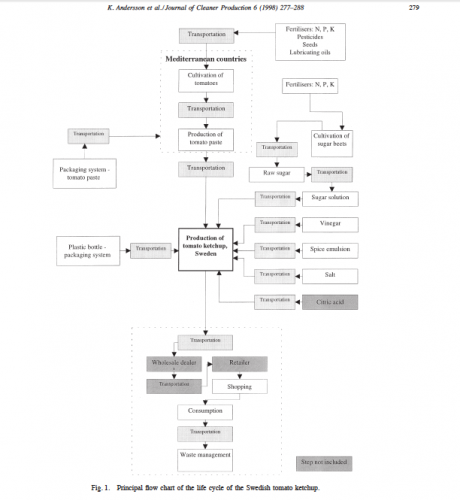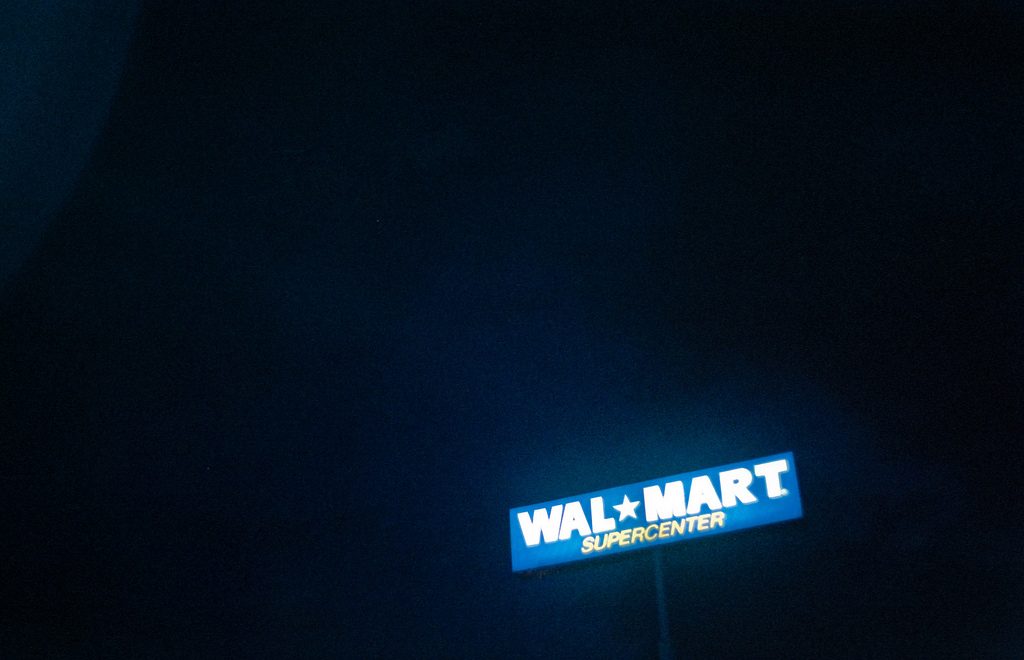Deep inside the Walmart website, a page opens with a question you would not expect from the world’s biggest retailer:
How much do you know about what’s behind a product’s label?
It is not a quiz, merely a rhetorical hook. What Walmart really wants to talk about is how much it now knows about what’s behind the label, and how it aims to use this knowledge to improve the “sustainability” of everything it sells. Exactly what Walmart means by this term the page itself does not explain. But it does link to a short and intriguingly titled video, The Secret Life of Sliced Turkey.
Walmart has actually made several videos about its products’ secret lives, all available on YouTube. All focus on food or its packaging (one explores the secret life of Walmart’s recycled pizza boxes), all take viewers back into the supply chain, and all start from “the raw truth,” as “Sliced Turkey” puts it, that the system producing these goods is fundamentally unsustainable. But the secrets revealed about sliced turkey are not the nasty ones uncovered in typical food documentaries. The video instead showcases little-known instances of innovation and cooperation. It’s like a poultry industry exposé, flipped sunny-side up. Even the turkeys look happy.
Driving the video’s cheery storyline is the knowledge produced by a modeling technique called life cycle assessment (LCA). LCA quantifies the environmental impacts incurred during a product’s material “life,” from raw material extraction through disposal. Although the technique dates back to the early 1970s, for years it received little attention outside of northern European engineering schools. Companies that hoped to use life cycle studies for green marketing found them slow, costly, often inconclusive, and all too contestable. A high-profile public relations war between the cloth and disposable diaper industries in the early 1990s was just one of many instances when conflicting LCA studies raised more doubts than they resolved.
Today, though, corporate interest in LCA is booming, especially in the food business. Advances in method and software have streamlined the modeling of product life cycles, while the rise of an LCA professional community—the subject of my own ethnographic research—has boosted the technique’s scientific credibility. Many of the world’s biggest food companies have employed teams of LCA experts to “footprint” their products (the word has become a verb). They are quantifying farm-to-fork impacts not just on climate, but also water, land, air, and natural resources. At least for some, LCA has become part of the information infrastructure used both to manage global supply chains and to demonstrate transparency. Companies do not, however, necessarily intend to reveal their findings via advertising or labels. If they did, more people would have seen the “Sliced Turkey” video. At last count, it had had fewer than 4,000 views on YouTube.
Why, exactly, do companies want to know about their products’ secret lives? More to the point: why, and for whom, has Walmart made videos showing how much it knows about these lives? “Sliced Turkey” provides some clues. The only speaking role goes to an executive at Plumrose USA, the supplier of Walmart-brand sliced turkey. He observes that many people assume that such a product simply travels from farm to processor to store shelf. But the “whole story,” he says, “involves much, much more.” This is one of LCA’s biggest selling points. While many green claims take account only of where or how goods are produced (i.e., local, organic), LCA allows companies to say they have looked at the big picture. The scale of analysis is itself authoritative.

Flow chart of the life cycle of ketchup. From K. Andersson, Journal of Cleaner Production 6 (1998).
This authority mirrors the vast geographic scope and complexity of many product supply chains. In the case of Walmart sliced turkey, the Plumrose executive points out that every ingredient—not just turkey meat, but also salts, starch, and even the package zipper—“has a life of its own.” As he explains how his company tracked all those lives, the video zooms out to show each as a brightly colored line, connecting Plumrose’s Michigan headquarters to suppliers around the globe.
These lines then morph into a bar graph showing that turkey processing (aka slaughtering) accounts for the heaviest water use. In LCA terminology, it is a “hotspot.” Often the hotspots identified by LCA defy popular assumptions. Life cycle studies of many foods, for instance, find that the farm, not transport or packaging, accounts for the bulk of many impacts (Tobler et al. 2001). Sliced turkey’s water hotspot is no surprise; slaughter is a messy business, even if does not look that way in the Walmart video. This part of the story instead tells how Plumrose’s findings inspired its turkey meat processor, Farbest Foods, to find a way to reduce its water use by 50 million gallons of water per year.
The video then turns to a series of innovations undertaken by Plumrose at its own manufacturing facility, the hotspot for energy use. Viewers learn that the company’s new trucks are up to 30 percent more efficient than their predecessors, and driving 800,000 less miles per year: “that’s 300 less coast-to-coast hauls!” says the narrator (assuming roughly 3000 miles per haul, it would be closer to 160 hauls, but no matter). It has redesigned its packaging, cutting cardboard use by 35 percent even while selling more turkey. And it has switched to reusable pallets, saving 17,000 trees and 9 million gallons of water annually. Waving truck drivers, smiling workers, and sunny treetops fill the screen, but just as backdrop. The numbers are the message, especially the final one: Plumrose’s innovations save the company nearly a million dollars per year.
LCA excels at numbers. Its “big picture” findings are composed entirely of quantitative data points. Although often highly approximate, these numbers lend themselves to forms of visualization and commensuration that in turn lend authority to LCA itself, at least in corporate circles. In contrast to fuzzy claims about a product’s naturalness and eco-friendliness, LCA’s bar graphs and pie charts appear to represent “just the facts” about its environmental impacts. LCA findings can also be converted into monetary values, demonstrating how much a specific eco-efficiency would save or cost. Indeed, one of the main reasons Walmart began collecting information about product life cycles was to identify ways to make them cheaper as well as greener. It indicated that it would be in suppliers’ interest both to share their numbers on energy use, emissions, and so forth, and to make sure those numbers improved.
Near the end of “Sliced Turkey,” the Plumrose executive returns, describing how his company’s new perspective on its supply chain has proven “a real game-changer.”
It’s helping us grow our partnership with Walmart, it’s showing us who the real leaders are in the industry and our supply chain, and it’s helping us reduce costs. And perhaps more importantly, it’s helping us make connections all the way back to the farm, where we know a lot of innovation opportunities exist.
What kind of innovations? A scene of fluffy turkey chicks offers no answers. This is probably no accident; LCA studies of poultry products show that the surest way to improve their eco-efficiency is to minimize the space, time and feed used to produce them (Leinonen et al. 2012). By certain measures, then, caged production systems rate better than free-range alternatives. But they do not make for the best video footage.
Although the Plumrose executive continues talking about partnership, he has already said all he needs. It’s now clear that the intended audience for “Sliced Turkey” is not Walmart’s consumers, but rather its suppliers, and in turn their suppliers. Farmers especially must be prepared to show that they can produce sustainable food the Walmart way: more with less, for less. After all, the narrator concludes, “in the end this is all about the consumer. It’s about saving her money, and making sure that every dollar she spends is a vote for a better world.”
Make no mistake: LCA can generate valuable insights into food’s ecological life. It has already drawn attention to the less-visible impacts of fertilizer and feed production, as well as waste across the food chain. It has helped question the easy assumptions of locavorism. Whether the knowledge produced by LCA can help make food measurably more sustainable depends, of course, on the measures and how they are used. LCA’s claim to a “big picture” perspective already faces challenges from those who see important measures missing. Biodiversity, animal welfare, labor; LCA practitioners themselves admit that their models cannot yet capture many of the diverse and localized impacts of food’s farm-to-fork existence. But they might someday. “The Secret Life of Sliced Turkey,” in other words, may be in for a remake, and next time Walmart may not control the storyline.
